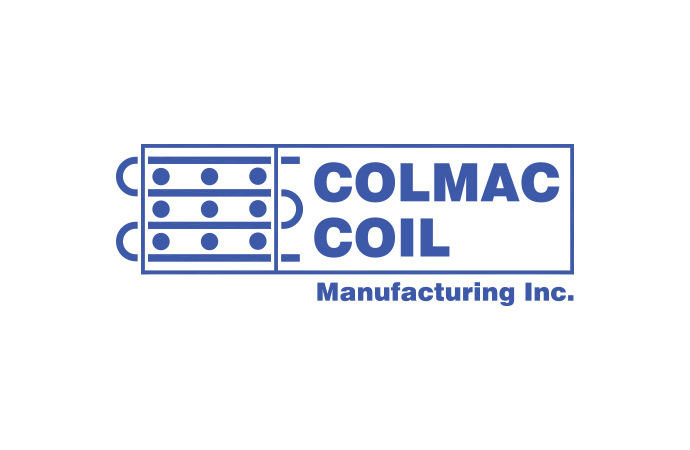The U.S. subsidiary of Star Refrigeration, Azane, is playing a leading role in the U.S. as low-charge ammonia freezers and chillers increase their market penetration, replacing R22 and HFCs. In the latest edition of Accelerate America, focused on industrial refrigeration, Azane’s business development manager Derek Hamilton explained ammonia’s new lease on life in the U.S..

The industrial cold storage industry is beginning to undergo a transition with ammonia refrigeration systems now able to do the work of much larger systems, while vastly reducing the amount of required ammonia.
This development comes at a time when at least three regulatory changes in the U.S. are converging to create a need for low-charge ammonia systems: the increasingly restrictive regulation of systems with more than 10,000 pounds (4,535 kg) of ammonia, the phaseout of R22 by 2020, and the impending limitations on HFCs.
Azane, a San Francisco-based subsidiary of British company Star Refrigeration, aims to take advantage of this regulatory climate with its two low-charge ammonia units – the Azanefreezer, a condensing unit for freezer and cooler applications, and the Azanechiller, designed for a wide variety of uses. Hamilton confirmed both units, manufactured out of Pennsylvania, are slated for their first U.S. installations this year.
In terms of ammonia charge, Azane’s condensing units have about five pounds (two kg) per ton of refrigerant (TR) and the chillers two pounds (one kg) per TR. By contrast, a recirculated overfeed central ammonia system commonly has 20 pounds (9kg) per ton while a DX system would have 10 pounds (5kg) per TR. The condensing units have cooling capacities ranging from 26 to 107 TR, the chillers from 60 to 294 TR.
In the low-charge ammonia arena, Azane is competing with companies like NXTCOLD and Evapco that also provide modular units.
Azane’s parent company, Star, has been producing low-charge packaged ammonia systems in the UK for five years, and other low-charge systems much longer.
“We’re seeing that the U.S. will have to do things differently and low-charge ammonia will be part of that,” said Hamilton. “Over the past 18 months there’s been a real buzz surrounding this at the trade shows.”
Low-charge units targeting ‘low-hanging fruit’: small refrigerated warehouses
Hamilton acknowledges that, even with regulatory pressures bearing down, the U.S. industrial refrigeration industry will not change its traditional approach to ammonia refrigeration overnight. For Azane, lower-hanging fruit may be smaller refrigerated warehouses – 10,000 square feet (929 m2) or less – that employ R22 or HFCs.
“The phaseout of R22 is having a larger and larger effect on the industry,” Hamilton said during a presentation at the IIAR Conference and Expo last month in San Diego. “The amount of R22 that’s available is going down and the price is going up. Facilities are at risk if they have a large leak and can’t find refrigerant.”
Azane has a compelling economic argument. Compared with R22 or HFC warehouse systems, according to the company, Azane’s units are competitive on capital costs, lower in maintenance, and 15% to 20% higher in efficiency.
For end users trying to phase out R22 or HFCs who are unaccustomed to ammonia, Azane is positioning its low-charge condensing units in a way that overcomes the stigma of ammonia as a dangerous refrigerant.
“This is not like a central machine room with massive amounts of ammonia. We’re trying to make the transition to ammonia a much easier thing.”
Azane’s low-charge modular units <i>can</i> be effectively used in large-scale refrigerated warehouses, but are more cost-effective and efficient in smaller facilities. And, although larger facilities traditionally use much larger charges, Hamilton noted ‘the general drive to reduce ammonia charge’.
Simple Design
Azane’s low-charge-ammonia condensing unit comprises two or three screw compressors, a condenser and control valves in a single package. Its condenser is cooled by air, a less expensive and simpler option than water, which is ‘becoming an issue now in a lot of areas’, according to Hamilton. The condensing unit can be placed on a rooftop or at the side of a building and connected to two evaporators (also supplied by Azane) in the cooling space. “(The condensing unit) is close to plug and play,” said Hamilton.
Unlike many evaporators, Azane’s has no control valves, which instead are housed in the condensing unit. “This reduces the potential for leaks and makes the system simpler to operate and maintain,” Hamilton said. The evaporators use efficiency-enhancing aluminum coils supplied by Colmac Coil. They employ reverse-cycle defrost.
Azane has what it calls a “low-pressure receiver” design in its condensing unit, which takes the place of an expansion valve in front of an evaporator as in a DX system. “We take high-pressure liquid from the condenser and subcool it, then expand the liquid to low pressure and send the low-pressure liquid to the evaporator coils,” said Hamilton.
How does it reduce the charge?
“We reduce the charge by eliminating all non-useful refrigerant from the system,” Hamilton said. This includes vessels with buffer volumes of refrigerant in the overfeed system. In addition, Colmac’s aluminum coils are designed to operate with a refrigerant charge that is a fraction of what you would need in a traditional system. “This is a key technological development for low-charge systems at freezer temperatures so you don’t have to pump all this extra liquid.”
“The risk (of a leak) is all but eliminated. We don’t have any mechanical joints or flanges (in the evaporator) – nothing except fully welded pipe work. The only place where a leak is conceivable would be in the condensing unit on the roof.”
About Star Refrigeration and Azane
Founded in 1970 in Glasgow, Star Refrigeration has grown to be one of the UK’s largest independent industrial refrigeration engineering companies. Renowned for innovation, it continuously pushes forward the boundaries of environmentally focused refrigeration and air conditioning. Star is a Total Solutions Provider, working in partnership with customers from design through to commissioning and maintenance. Its cooling solutions enable end users to reduce energy consumption, increase efficiency and drive down lifecycle operating cost, while also ensuring environmental sustainability.
In 2014, the Star Refrigeration Group launched U.S. subsidiary Azane Inc., established to meet growing demand for the Group’s low-charge ammonia “Azane” technology, which includes the Azanechiller and Azanefreezer. The subsidiary’s San Francisco office will act as a regional headquarters for Azane Inc.
MORE INFORMATION
Related stories





